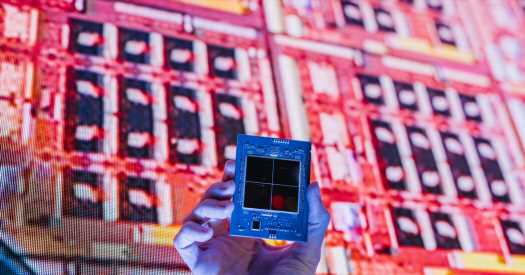Commerce Dept. Outlines Its Bid to Fund Cutting-Edge Chip Research

WASHINGTON — The Biden administration outlined plans on Tuesday to propel research on the type of cutting-edge microchips needed to power computers, cars and other devices, saying it would establish a new national organization with locations in various parts of the United States.
The Commerce Department, which is in charge of the administration’s efforts to revitalize the American chip industry, said its new National Semiconductor Technology Center would bring together companies, universities and others to collaborate on next-generation chip technology. The organization would include a string of research centers, the locations of which have yet to be chosen, and aim to be operational by the end of this year.
The organization would help “regain America’s leadership in research and development and technologies of the future, and importantly, make sure we stay there for decades to come,” Gina Raimondo, the commerce secretary, said in a briefing Monday.
“It’s a place where industry and academia and start-ups and investors can come together to solve the biggest, grandest challenges and set priorities,” she added.
The plans are part of the Biden administration’s effort to reinvigorate semiconductor manufacturing and ensure that the United States has a steady supply of chips necessary to feed its factories and support its national defense. The Commerce Department has been charged with doling out $50 billion to revitalize the industry, including $11 billion devoted to research and development.
The technology center is expected to be central to that effort. Some of its locations would be capable of end-to-end manufacturing of new chip designs, while others would focus on experimenting with new materials and equipment, or with new ways of putting chips together to make them more powerful, Ms. Raimondo said.
Laurie Giandomenico, the vice president and chief acceleration officer of MITRE, a nonprofit organization that operates federally funded research centers, called the $11 billion investment by the United States “pretty significant,” given that the semiconductor industry has in past years spent about $70 billion on research and development globally.
The challenge, she said, would be to ensure that the money was spent to encourage collaborative research to solve the industry’s biggest problems, not the “siloed innovation” now carried out by chip firms that carefully guard their creations from competitors.
“It should be on areas that no one company can solve alone,” she said.
Companies, universities, lawmakers and local governments have been lobbying the administration to set up an outpost of the new organization in their area. Ms. Raimondo emphasized that the organization would be an independent “trusted” player, with board members appointed by a separate selection committee and strict controls for protecting intellectual property.
One of the organization’s primary goals, Ms. Raimondo said, would be making it easier and less expensive for start-ups and other new entrants to develop and commercialize new chip technologies.
“We want to cut in half the projected cost of moving a new chip from concept to commercialization over the next decade,” she said.
Chris Miller, the author of “Chip War,” which chronicles the industry’s development, said it was comparatively easy for a researcher to develop a new idea for a chip in a laboratory. But given the high cost of producing chips, researchers can have a hard time getting their inventions manufactured.
Designing an advanced chip, which may have tens of billions of transistors, can cost hundreds of millions of dollars, according to analysts. The latest systems for defining the smallest circuitry on wafers cost more than $100 million each, while the new factories called “fabs” that make advanced chips can cost $10 billion to $20 billion.
“The big fabs are interested in producing 100 million chips for an iPhone, not 10 chips for a professor at M.I.T.,” Mr. Miller said.
Venture capitalists also often shy away from investing in chip start-ups because they require more initial funding than other kinds of tech companies and more time to generate a return on that investment.
To help address some of these issues, the government’s technology center will establish an investment fund to support start-ups, and provide manufacturing facilities for small players to experiment with new technologies.
“I see a world where the U.S. can actually revitalize this microelectronics industry because we could bring down the costs of doing a chip start-up by a factor of five to a factor of ten,” said Gilman Louie, a tech investor and chief executive of a nonprofit investment organization called America’s Frontier Fund.
The center’s research priorities are expected to be refined in the coming months. But the Commerce Department specified several areas it would focus on, including advancing the technology for analyzing the microscopic components of chips and setting technical standards for new kinds of chip packaging.
As progress slows in squeezing ever-smaller transistors onto each piece of silicon, many companies are now breaking up big products into smaller “chiplets” that are placed side by side or stacked on top of one another.
The Commerce Department said that setting new standards for these practices would pave the way for the creation of marketplaces in which companies can assemble new products using chiplets from multiple vendors.
Source: Read Full Article
